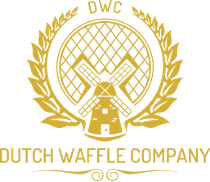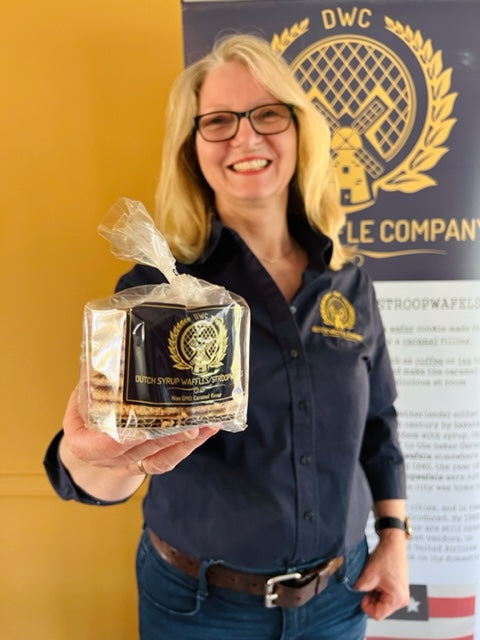In 2020, the Dutch government made a significant decision: it officially dropped the term "Holland" from its international branding in favor of "the Netherlands." While this shift aimed to clear up confusion, many people around the world still wonder—what is the difference between Holland and the Netherlands? Why has the country famous for their delicious Stroopwafels moved away from using "Holland," and how did we get here?
What we'll discuss
What is correct: Netherlands or Holland?
Let’s start with the basics. The Netherlands is the official name of the country. It consists of 12 provinces, two of which are called North Holland and South Holland. So when people refer to “Holland,” they are technically talking about just these two provinces, not the entire country.
Holland, however, has been used informally and colloquially to refer to the Netherlands as a whole, especially by foreigners. This misnomer likely took hold due to the historical and economic prominence of North and South Holland, which became the most internationally recognized regions of the country.
Simply put: if you’re referring to the entire country, the correct name is the Netherlands.

Where is Holland?
So, where or what exactly is Holland? Holland is not a country but rather a region made up of two provinces: North Holland and South Holland. These provinces are located in the western part of the Netherlands and include major cities like Amsterdam, Rotterdam, and The Hague.
Historically, Holland was the most powerful and economically prosperous part of the Dutch Republic during the 17th century, also known as the Dutch Golden Age. It played a dominant role in European trade, shipping, and culture, leading to international recognition. As a result, Holland became synonymous with the Dutch Republic in the eyes of many foreigners, which is why people started using “Holland” as shorthand for the entire country.
Why does the country not use Holland anymore?
By 2020, the Dutch government decided to retire the use of "Holland" in its international branding. There were several reasons for this shift:
-
Accuracy: The government wanted to promote the entire country, not just two of its 12 provinces. By using “the Netherlands,” it was emphasizing the diversity of the regions, cultures, and contributions that extend beyond just North and South Holland.
-
Tourism management: Amsterdam and other major cities in Holland were becoming overcrowded with tourists. By using “the Netherlands” in branding, the government hoped to spread out tourism across the country, encouraging visitors to explore other beautiful regions like Friesland, Limburg, and Gelderland.
- Cultural representation: Emphasizing the Netherlands as a whole allows for a broader representation of Dutch culture and history, which varies widely across the provinces. Moving away from “Holland” helps highlight this diversity.

Grote markt (market square) in Nijmegen, the largest city in Gelderland
Why Holland is still used in sports events
Despite "the Netherlands" being the official name, "Holland" is still commonly used in sports due to history, simplicity, and familiarity. Historically, North and South Holland were powerhouses in Dutch sports, with famous teams and athletes hailing from these provinces. The term "Holland" is easier to chant and has been ingrained in sports culture, particularly in football with chants like "Hup Holland Hup."
Internationally, "Holland" is more recognizable and quicker to say, making it a convenient shorthand in the sports world. For many, it symbolizes Dutch pride and sports heritage, keeping the name alive in stadiums and broadcasts worldwide.
Why are people called Dutch?
Now, if the country is called the Netherlands, why are its people referred to as Dutch? This terminology has roots in the country’s linguistic and historical development.
The word "Dutch" comes from the Old High German word “diutisc,” meaning "of the people." It was used to describe the language spoken by the people living in the area that is now the Netherlands, Belgium, and parts of Germany. Over time, as the Netherlands became an independent nation, "Dutch" came to refer specifically to the people and language of the Netherlands.
The confusion often arises because the word "Dutch" sounds somewhat similar to "Deutsch," which is the German word for German. However, these are entirely separate languages and national identities.

Where does the name "The Netherlands" come from?
The name "the Netherlands" derives from the Dutch word “Nederland,” meaning “low land.” This reflects the country’s geography, as much of its land lies at or below sea level. Historically, the term referred to the Low Countries, a region that included present-day Belgium, Luxembourg, and the Netherlands. The area was known for its flat landscape and vulnerability to flooding, leading to a long tradition of land reclamation through dikes and polders.
The name "Netherlands" came into widespread use during the 16th century as the northern provinces of the Low Countries gained independence from Spanish rule, eventually forming the Dutch Republic. In 1815, after various political changes, the modern Kingdom of the Netherlands was established. The name symbolizes the country’s close connection to its unique landscape, shaped by water management and land reclamation efforts over centuries.
Netherlands or The Netherlands: The correct spelling
When referring to the country, the proper term is “the Netherlands.” This full name includes the definite article “the” and is always used in its plural form. As I explained in the chapter above the term “the Netherlands” means “low lands,” which accurately describes the country’s flat and low-lying terrain.
The definite article “the” is essential because it signifies a specific geographic region known for being below sea level. Dropping the “the” and using just “Netherlands” is grammatically incomplete and can lead to misunderstandings.
Using “the Netherlands” properly ensures clear and respectful communication, honoring both the geographical and historical identity of the nation.
The bottom line
The Netherlands is a country rich in history, culture, and diversity, and its international image is now more accurately represented by the name "the Netherlands" instead of "Holland." Although Holland will always hold historical significance due to its role in shaping the country’s global influence, using "the Netherlands" acknowledges the entirety of the nation.
So, the next time you get asked where your delicious stroopwafels are from, remember: the Netherlands is the correct term for the entire country, and "Dutch" is the word used to describe the people and their language. Understanding this difference not only enriches our appreciation of the country but also respects its varied and vibrant regions.





9 comments
Wow i love Netherlands and i wish to come there one day…
Thanks for the interesting article in defining the differences between Holland and the Netherlands. I was born in Trinidad and Tobago and my grandfather was from Zeeland, the Netherlands.
I don’t speak Dutch as my grandfather never spoke to my father in Dutch, but I have Dutch nationality since 1973 and I am proud to still have the nationality.
A great and beautiful place to be.
It’s the only European or imperial country I want visit.
Thank you very much for the informative page. Growing up, I only knew Holland and now all is clear to me. Definitely, The Netherlands is on my bucket list to visit.👍